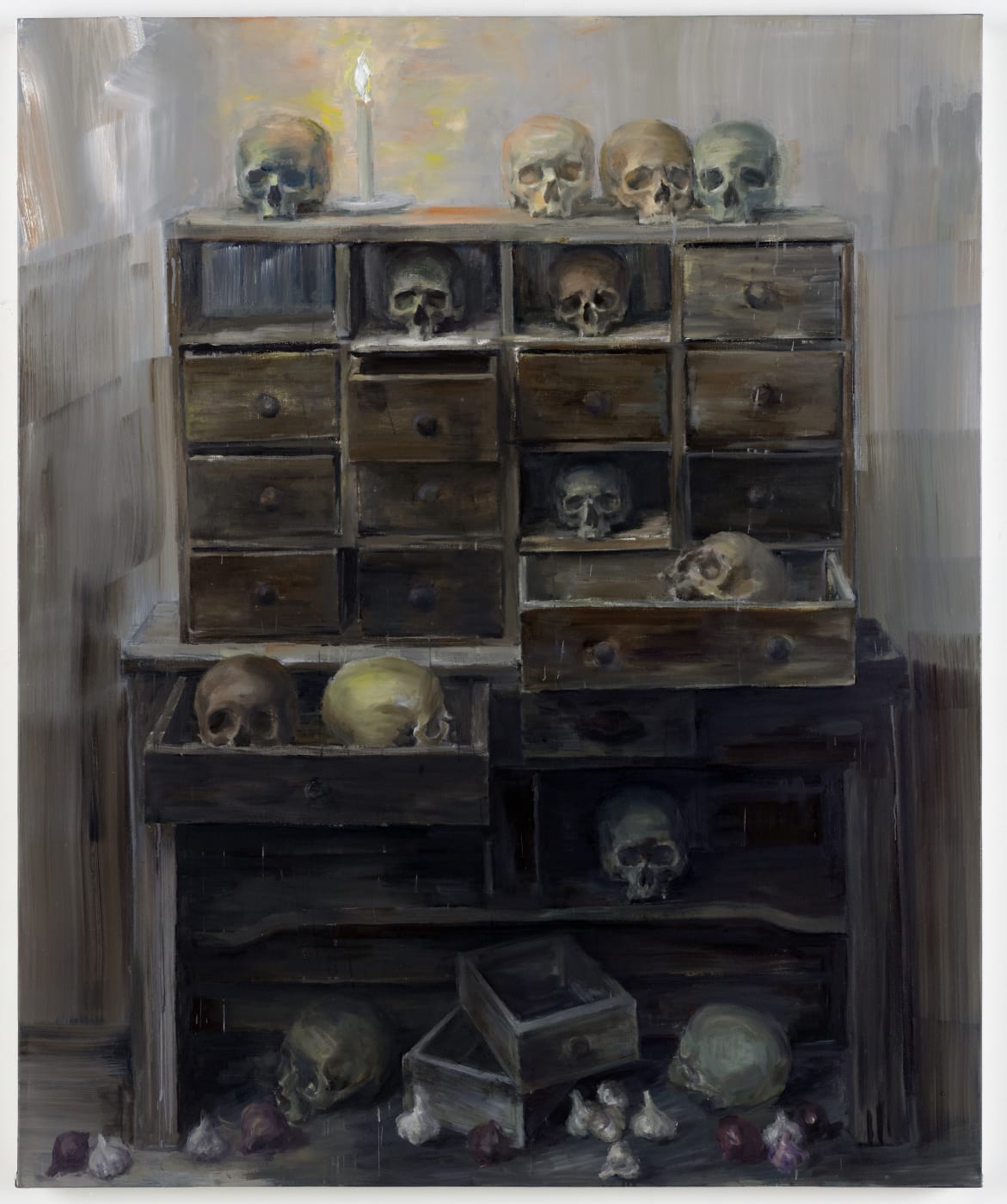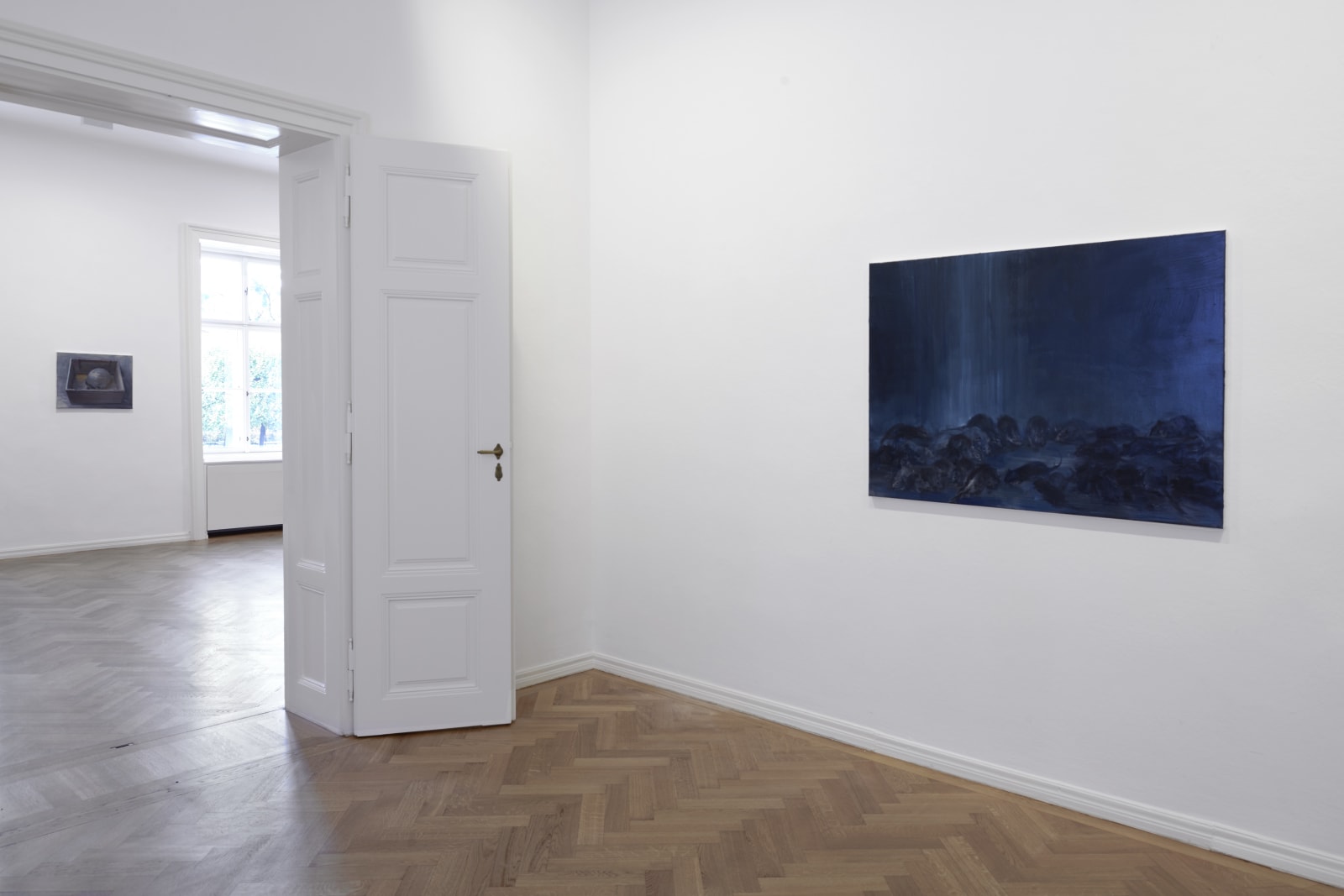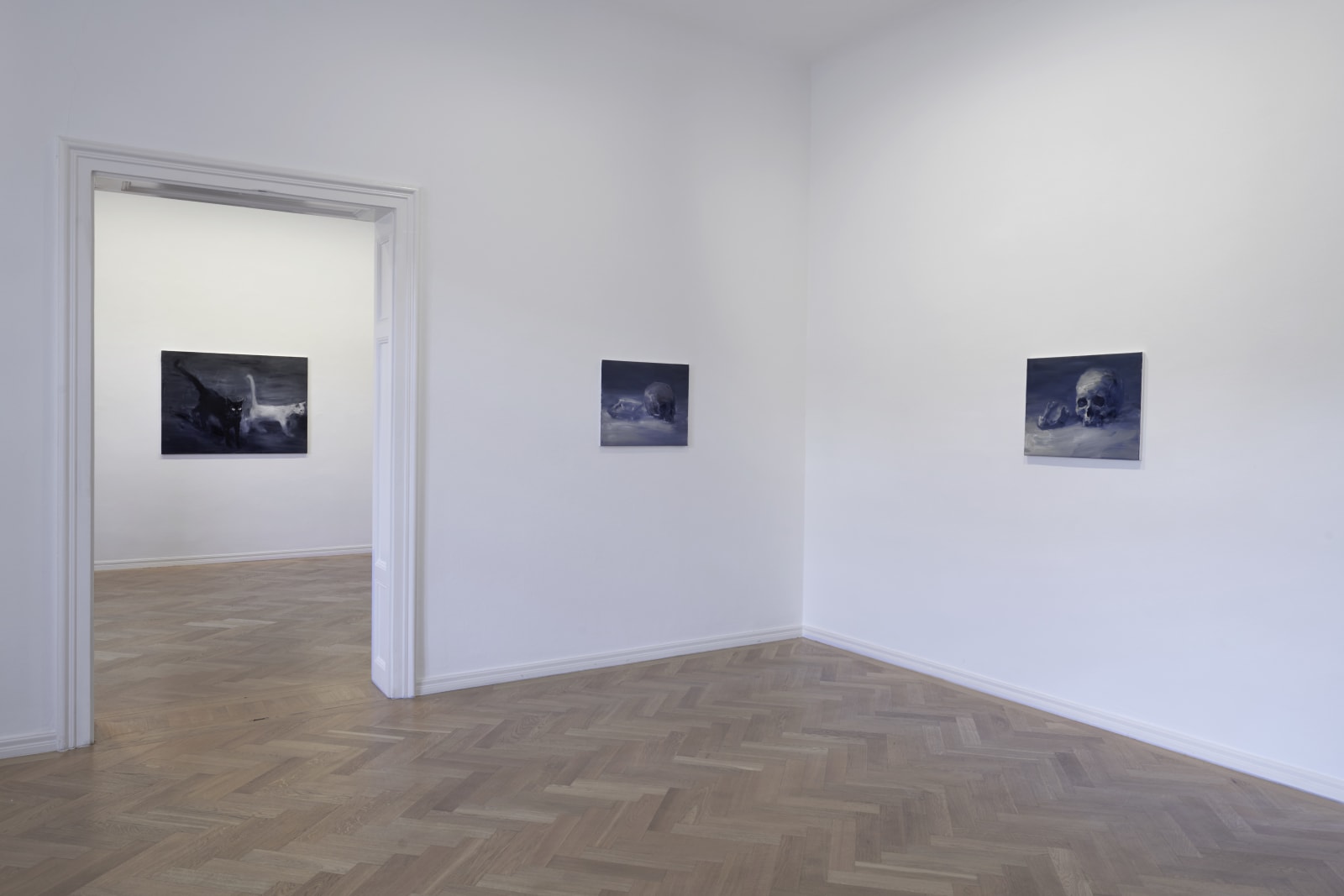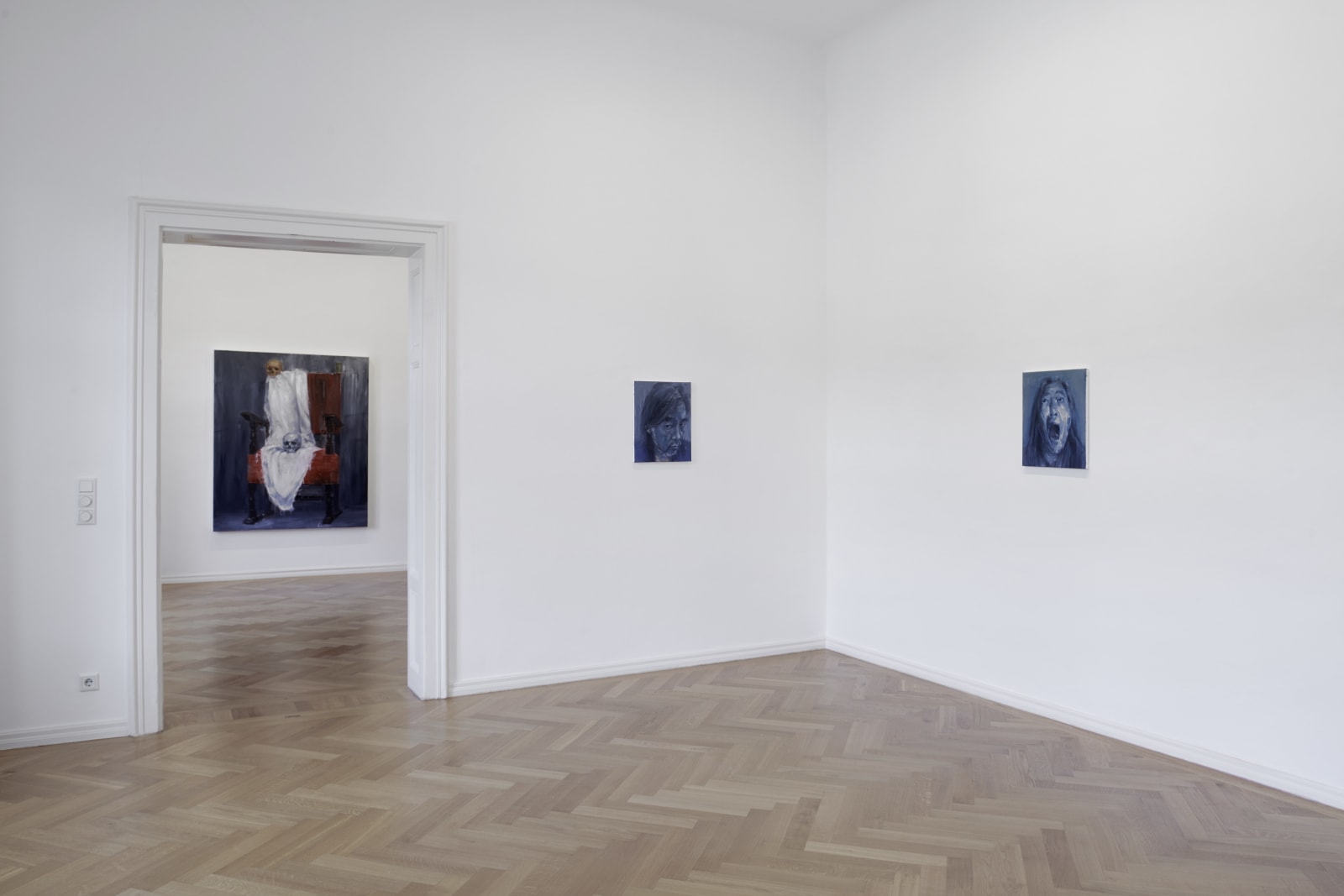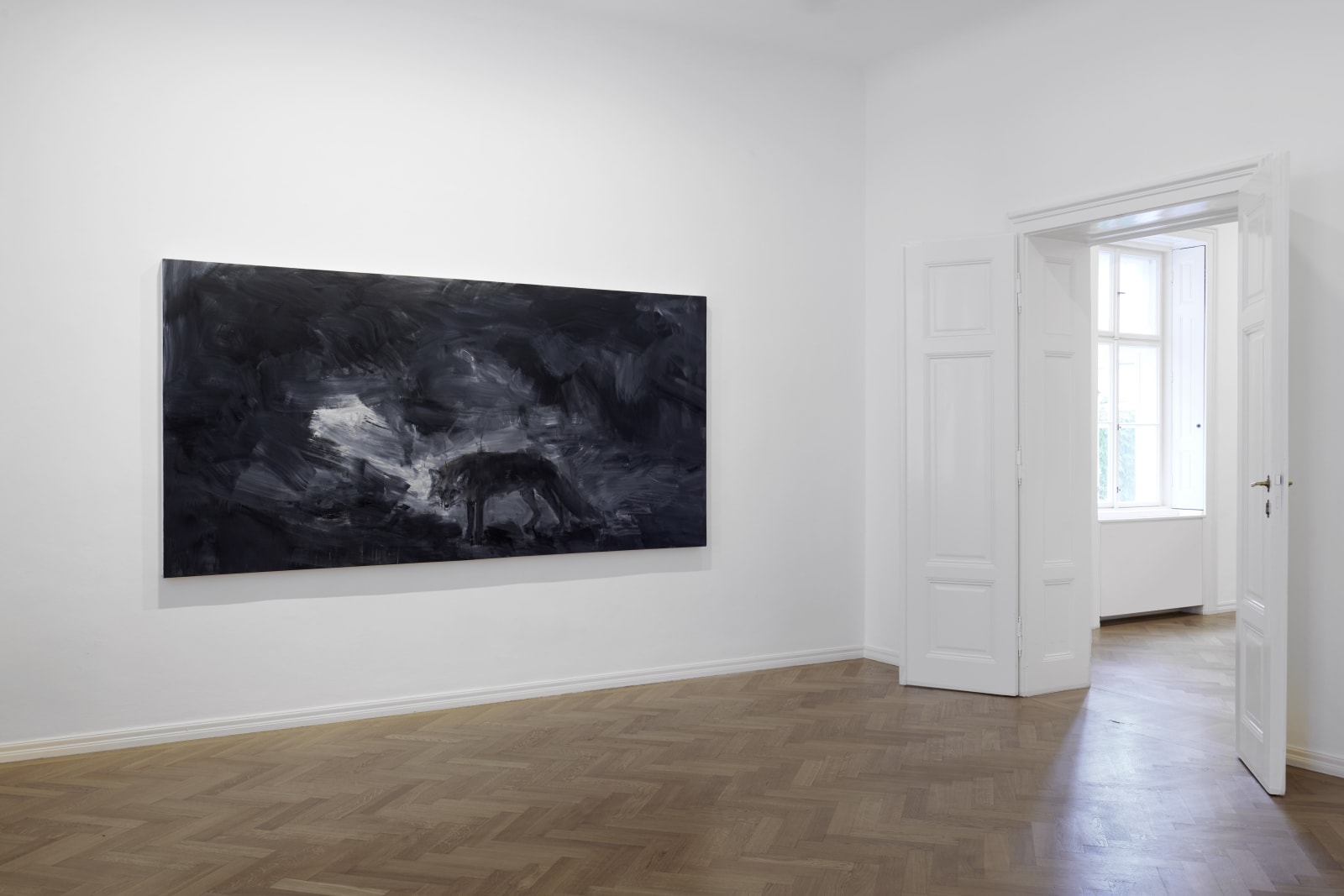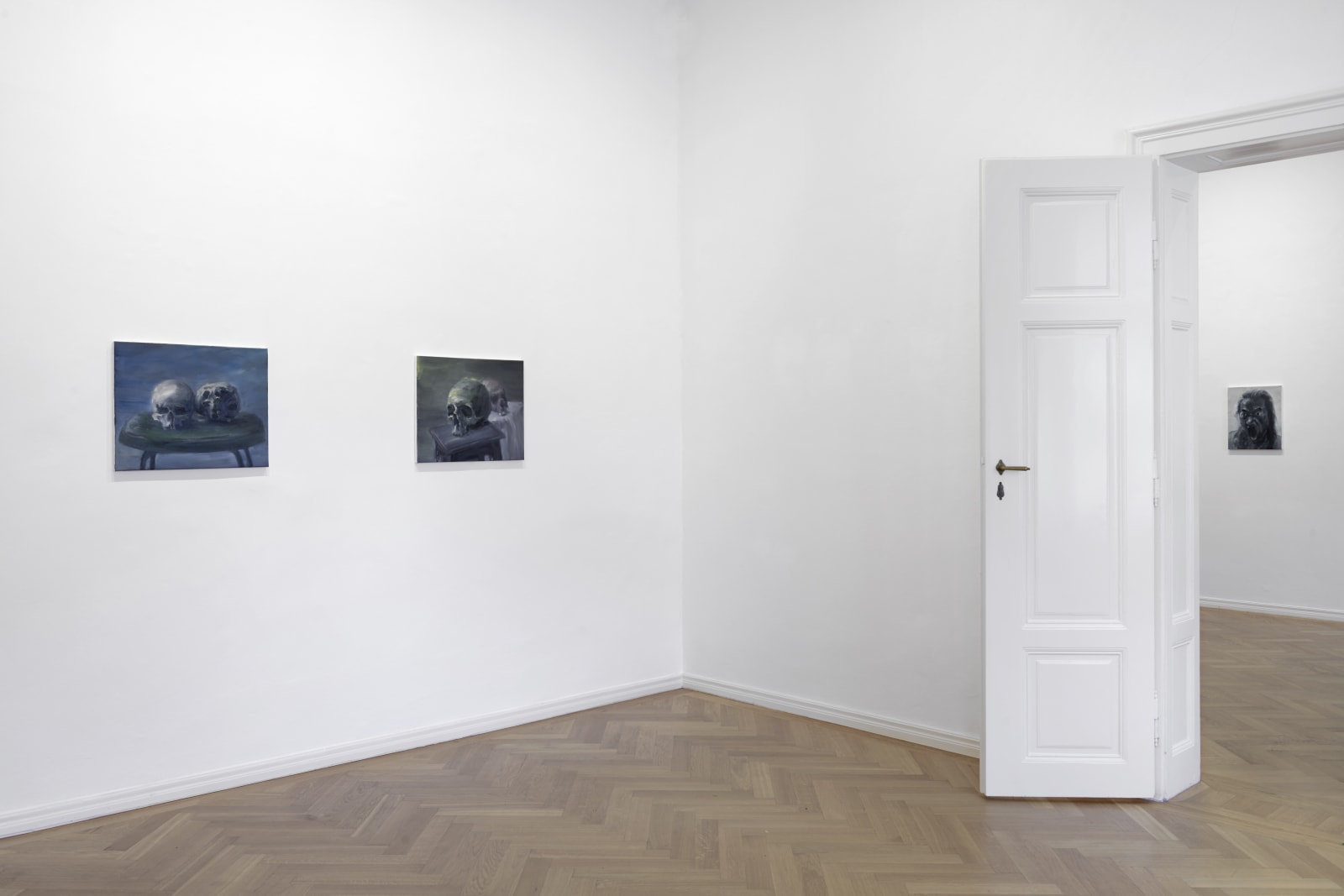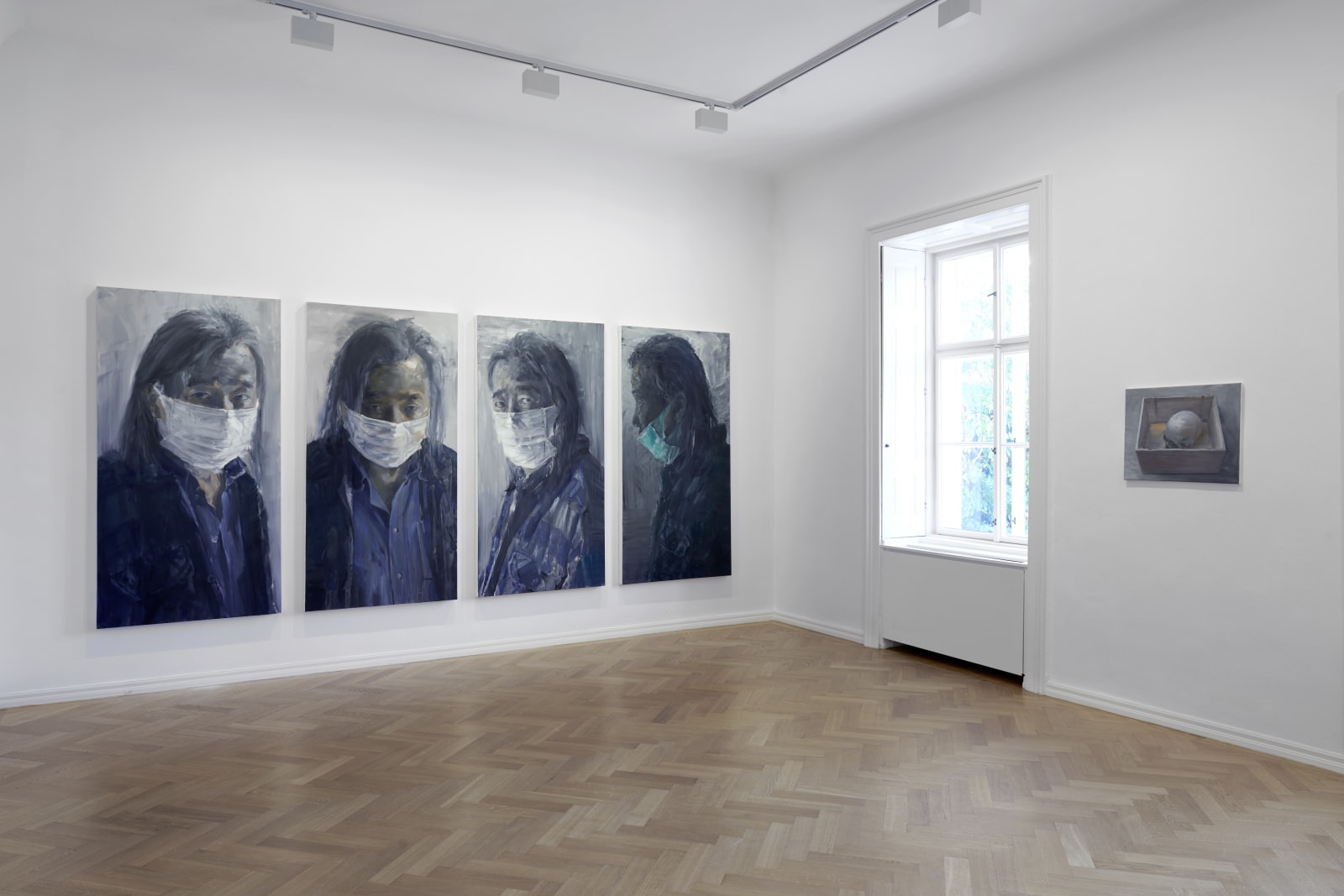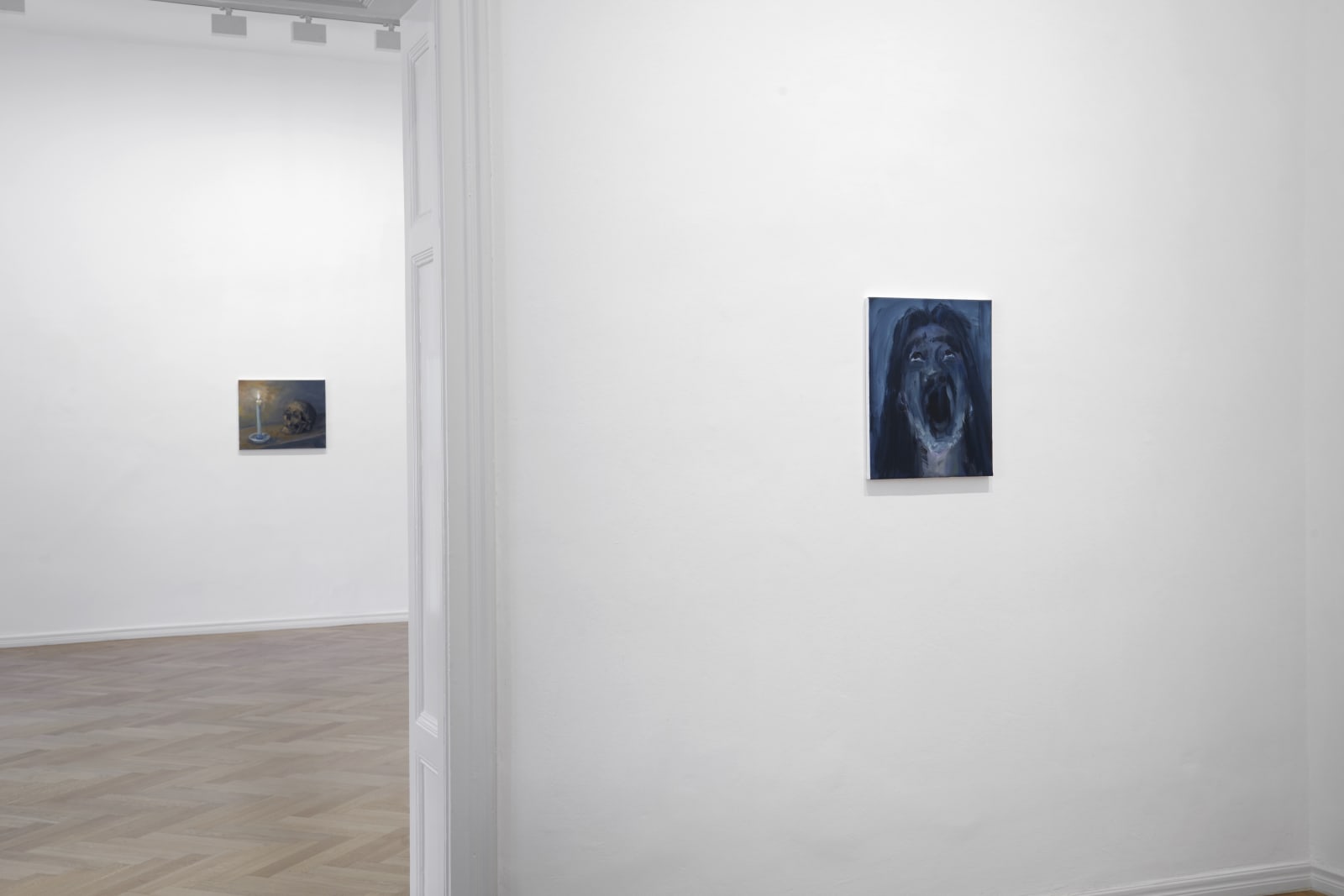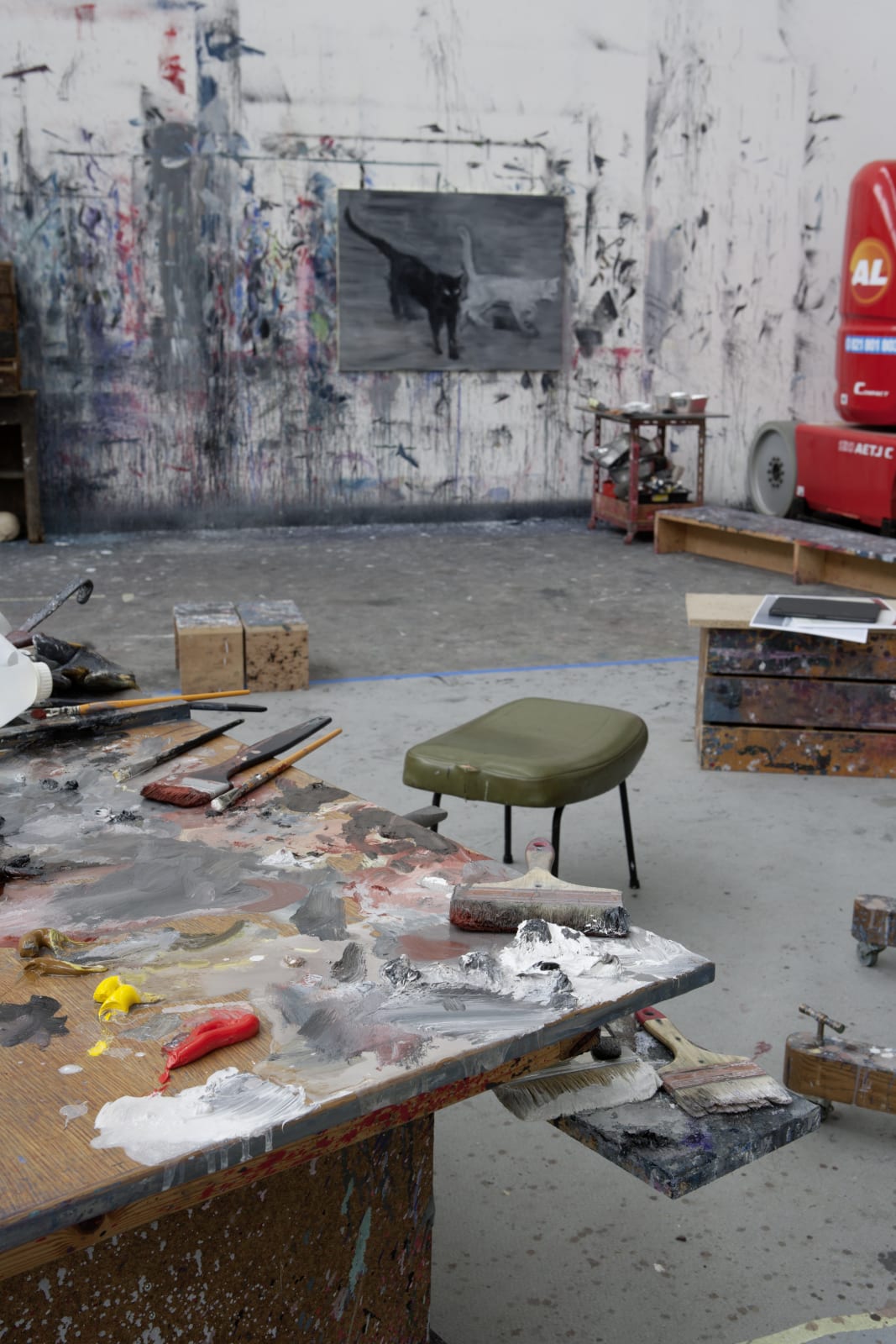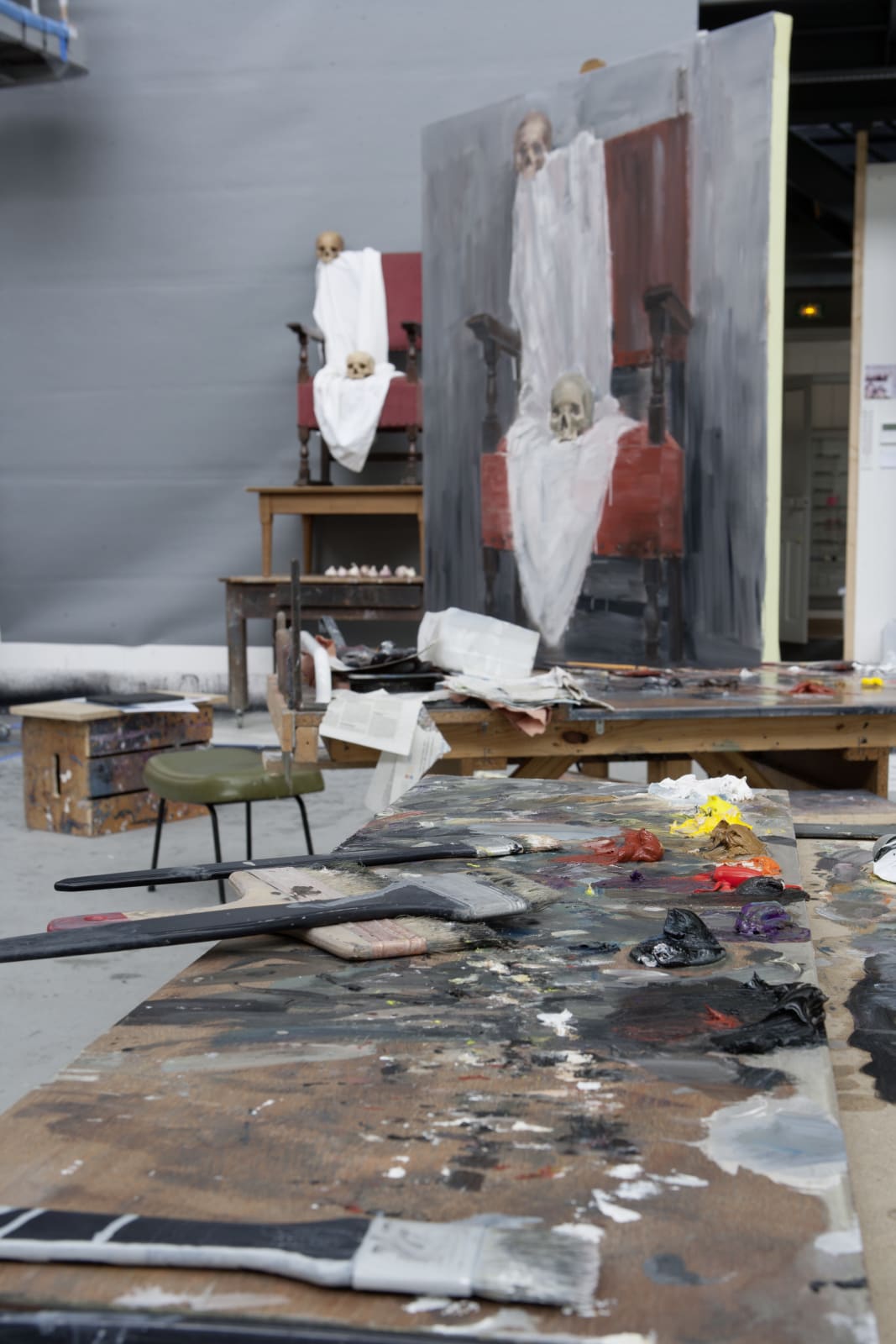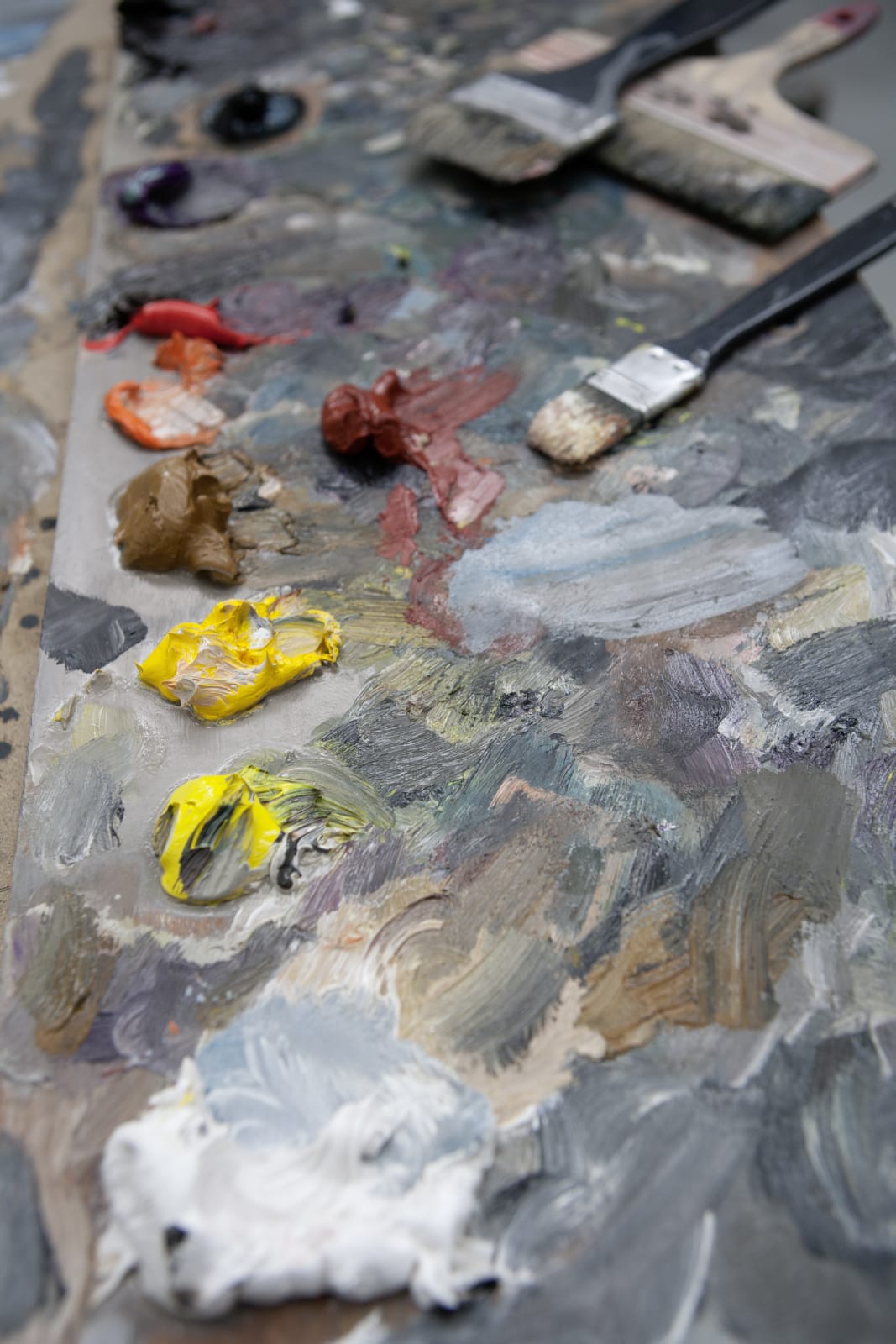Yan Pei-Ming’s new series of works explore the complexities of current global developments and their multilayered impact, on a societal as well as a personal and emotional level. While in recent years Yan Pei-Ming’s practice has been characterised by his engagement with the works and legacies of other painters, including Gustave Courbet, this exhibition marks the artist’s return to the self. Created during the last few months, the self-portraits and still-lifes of this exhibition are pervaded by feelings of constriction and solitude experienced during the artist's confinement. Yan Pei-Ming examines the unprecedented inner conflicts of the present moment in an intimate and piercingly direct way.
I did my first self-portrait at the age of thirteen. As I had no model, I painted myself with the help of a mirror, without bothering anyone. [...] When I arrived in Europe, I made a trip to Amsterdam and saw Rembrandt's self-portraits. Since then, I haven't taken up the subject again. When you look at his self-portraits, you can see the passage of time. It's so extraordinary, it disturbed me. I said to myself: I'm going to think about it and I've been thinking about it for ten years. — Yan Pei-Ming

For me, the most important thing in painting is light. This exhibition is a reflection on the act of painting today but also on light. It is also a return to painting from nature. Confinement has forced me to deal with what I have around me – and if there is one thing we have had time to do it is to pay attention to details. I have enjoyed it very much. — Yan Pei-Ming
Global lockdowns have given many wild animals a rare opportunity to explore emptied streets and waterways, without the threat of human presence. However, especially in urban areas, animals have often become too dependent on humans and their waste, thus demonstrating the ambivalent relationship between the human and the natural world. To Yan Pei-Ming the cave signifies a representation of his mental state as well as an indefinite, uncertain space, where day and night, past and future become blurred concepts.
2020 is the year of the rat in Chinese Astrology and also the artist's own astrological sign. While in western culture, the rat has a negative connotation, it is considered an animal of great intelligence and adaptability in China. For the artist, the rat symbolises the development of new ideas during these isolated times, the forming of innovative social connections and the hope of reuniting with friends and family in the near future.
This work is a nod to Yan Pei-Ming’s previous exhibition Aggressive Beauty at Galerie Thaddaeus Ropac in Salzburg, in which the artist explored the centuries-old tradition of papal representation in painting. In the place where the height of religious power once sat enthroned in the person of Pope Innocent X or Pope Francis, there now remains only the empty chair and two skulls. Yet the low angle of the viewer still puts them in a position of humility before the artefact. The popes themselves are human and perish, but the symbols of their power and their bond with the sacred remain eternal.
Yan Pei-Ming’s self-portraits document a certain turning point in the artist’s work. He has recently returned to this genre of painting, which was significant during the first stages of his artistic development, after avoiding it for over 30 years. The portraits show Yan Pei-Ming from different angles, becoming a sustained reflection on his own image during the recent period of isolation. The works document the artist’s emotions at specific moments, like snapshots of his mental state, captured at different times of day and under different lighting conditions.
Yan Pei-Ming’s still-lifes evoke established iconographic connotations such as the transience and fragility of life, while also embodying a universal and very contemporary quality – a duality characteristic of the artist. Painted in a period of physical isolation, during which each day resembled the next, the passage of time gained a new dimension for the artist, prompting him to re-examine this classic theme for the first time in three decades.

Painting is a hypothesis, a possibility of alternative. It is a necessarily empirical, interpreted vision of reality. Painting carries its own pictorial truth, it is neither true nor false.
| Yan Pei-Ming has gained international recognition first and foremost for his portraits, which include depictions of numerous personalities of contemporary interest such as politicians, actors and popes. Some of his most acclaimed works portray the figures of Mao Zedong, Bruce Lee and Barack Obama. Alongside and against these public figures, Yan Pei-Ming’s portraits extend to those of his family as well as himself. His body of work encompasses a wide spectrum of subjects, including historic and current events, such as the attack on the World Trade Center in 2001, or interpretations of iconic works of art history. The artist’s body of work is invariably indebted to the history of European painting and portraiture traditions. The illustration of status and power in traditional portraiture is particularly significant to his work, which reconnects with the archetypes of centuries-old conventions of representation. In an era of inflationary reproduction and digital exploitation, his subjects contain a tension between conventional forms and contemporary relevance, thus allowing interpretation on a classical, as well as a modern level. Yan Pei-Ming’s work is mostly characterised by his use of a two-toned monochrome colour palette in black and white or red and white, thereby directing stronger focus towards the subject and composition of his works. His paintings are executed with great energy and imagination, consisting of distinctively expressive brushstrokes. While his works often appear almost abstract at close range, they become increasingly sharper with distance, an effect intended to blur the lines between reality and imagination. |
Although the Shanghai-born artist defines himself as a European painter, both in style and subject-matter, in recent years he has increasingly drawn upon his Chinese cultural heritage in combination with the Western portraiture tradition. Likewise, he has begun to include a wider range of colours in his formerly strictly uniform palette, such as tones of blue or green. Born in Shanghai in 1960, Yan Pei-Ming moved to France at the age of 19, where he enrolled in the École Nationale Supérieure des Beaux-Arts in Dijon. He graduated in 1986, achieving rapid success with his expressive, portrait-dominated œuvre. In 2003, he gained international recognition at the Venice Biennale. Six years later, his work was acquired by the Louvre, where he exhibited a collection of portraits that sought to convey his personal perspective on Leonardo da Vinci’s Mona Lisa. In the last few years, solo exhibitions have been dedicated to the artist at the Des Moines Art Center, Iowa (2008); Ullens Center for Contemporary Art, Beijing (2009); Beijing Center for the Arts (2014); CAC Málaga (2015); Villa Medici, Rome (2016); and the Belvedere Museum, Vienna (2016). In 2019, the artist's work was shown at the Musée Courbet, Ornans; the Musée des Beaux-Arts de Dijon; the Petit Palais – Musée des Beaux-Arts de la ville de Paris; and the Musée d’Orsay, Paris, in which the artist paid homage to Gustave Courbet through the lens of his own biography. A very personal exhibition with a focus on his self-portraits will open at the Musée Unterlinden in 2021. Further exhibitions will take place at the Palais des Papes and the Collection Lambert, Avignon (2021), as well as the Schlossmuseum, Linz (2022). |






